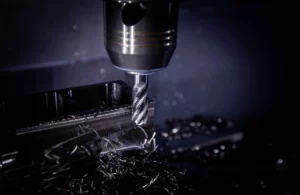When it comes to selecting the perfect single flute carbide end mill for your machining needs, there are a few key factors to consider. By taking into account these important aspects, you can ensure that you make the right choice for your specific application, leading to optimum performance and outstanding results. Let’s dive into the essential considerations to keep in mind.
First and foremost, it is crucial to understand the benefits of a single flute carbide end mill. These cutting tools are known for their exceptional chip evacuation, providing efficient material removal and preventing chip buildup, ultimately enhancing productivity. Their sharp cutting edges and high-quality carbide construction make them ideal for applications that involve high-speed milling and machining of softer materials such as plastics, acrylics, and wood. Additionally, single flute carbide end mills are renowned for their ability to produce clean and precise cuts, ensuring the highest level of accuracy and surface finish.
One of the primary factors to consider when choosing a single flute carbide end mill is the material of the cutting tool itself. Carbide end mills are highly regarded for their durability and longevity, allowing for extended tool life and reduced maintenance costs. The hardness and wear resistance of carbide make it an excellent choice for demanding machining operations. Furthermore, by selecting a single flute design, you can maximize the tool’s performance for applications that require enhanced chip evacuation.
Another vital aspect to focus on is the flute length of the end mill. The flute length determines the cutting depth and material removal rate that the tool can achieve. For instance, if you are working on shallower cuts, a shorter flute length may be sufficient. However, for deep cuts, a longer flute length becomes imperative to ensure efficient chip evacuation and prevent clogging. By carefully considering your specific machining requirements, you can select the most suitable flute length for optimum performance.
The diameter of the end mill is yet another critical factor that should not be overlooked. The diameter determines the size of the cutting tool, directly impacting the depth of cuts and the precision of the operation. Smaller diameters are generally preferred for intricate and detailed machining tasks, while larger diameters excel in heavy-duty machining, capable of removing larger volumes of material in a shorter span of time. By identifying the diameter that aligns with your specific application requirements, you can achieve the best results with your single flute carbide end mill.
Furthermore, it is crucial to consider the overall length and shank diameter of the end mill. The overall length should be selected based on the accessibility of the machining area and the required reach. On the other hand, the shank diameter must match the collet or chuck size of your milling machine to ensure compatibility. Neglecting these factors can lead to operational difficulties and compromise the performance of your end mill.
In conclusion, choosing the best single flute carbide end mill for optimum performance relies on careful consideration of several key factors. By understanding the benefits of single flute carbide end mills, selecting the appropriate material, flute length, diameter, overall length, and shank diameter, you can ensure that you achieve exceptional results in your machining applications.
